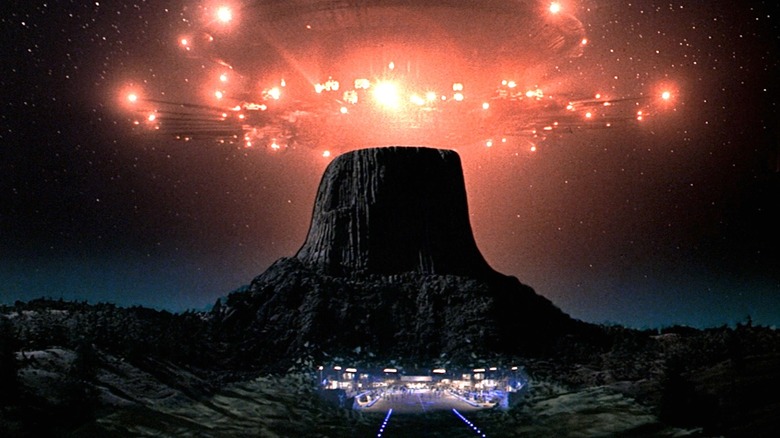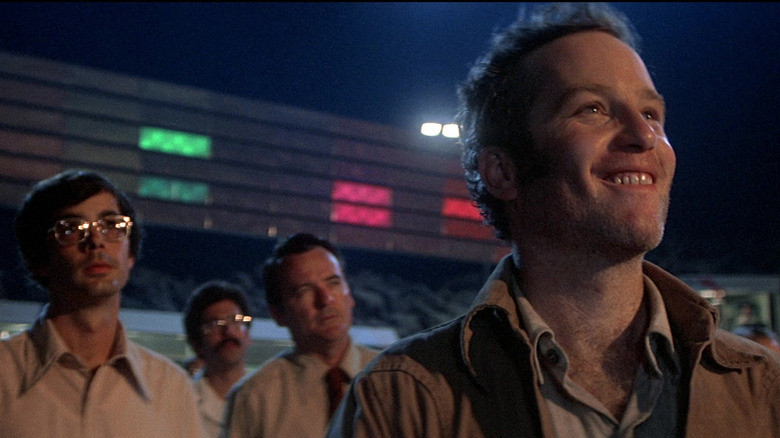Close Encounters Of The Third Kind's Massive Light Board Was An Actual, Playable Musical Instrument
Aside from the giant FAO-Schwarz piano in "Big" and the flamethrower guitar in "Mad Max: Fury Road," the ultimate movie instrument to play has to be the giant light board at the end of "Close Encounters of the Third Kind." Forget being ushered aboard the mothership by cute aliens. A true musician would stay behind and put on a concert after everyone left. In actuality, the massive prop built for the movie was a real playable instrument. According to Michael Klastorin's "Close Encounters of the Third Kind: The Ultimate Visual History" from Harper Collins, production designer Jon Alves ("Jaws") had a concept for the large-scale device that was "rooted in musical theory."
The western musical scale consists of 12 tones (as opposed to the Persian 22-tone scale), and Alves created a color panel system that would line up with each note. The size of the light board had to try and match the awesome size of the mothership, but when the aliens finally respond in kind, the sound emanating from the ship literally blows away the competition. When the tower windows shatter into pieces after the initial call and response between the human race and this new, extraterrestrial species, it serves as a humble reminder that our civilization is struggling to keep up.
When function meets design
With Alves and the production team working together for director Steven Spielberg's sci-fi classic, each note on the light board was "assigned a six-color palette to each note, ending up with a total of seventy-two panels, each having its own colored light." Alves goes into greater detail in Klastorin's book:
"'We wired them to a keyboard so we could actually play the colors of the various tones,' says Alves. After they were played for Spielberg and John Williams, the director made a few aesthetic changes to the placement of the various colors that would flash across the surface of the board."
In addition to Alves' work, Phil Dodds, a representative for the keyboard company ARP Instruments, came aboard to help out. The ARP 2500 keyboard-based music synthesizer they developed appears in the film. Dodds even has a cameo! As Klastorin writes:
"Spielberg met Dodds when he was installing and testing the equipment and asked him if he wanted to appear in the film as the ARP operator who plays the hallowed five-note tune when the Mothership arrives. During shooting, Spielberg would upgrade Dodds to a speaking role (although his dialogue was later cut) and name his character Jean Claude."
The ARP 2500 keyboard used in the film is surely one of the most coveted pieces of Spielbergian movie memorabilia in history. The real-world connection between Dodds and Alves brings so much more believability to the giant light board that could have seemed fairly ridiculous in the wrong hands. Hopefully, Dodds wasn't too upset about getting his lines of dialogue cut in the finished film. His contribution to cinema history, regardless, is still alive and well.

